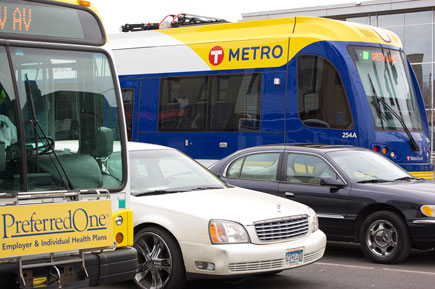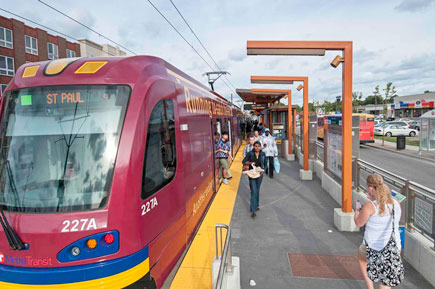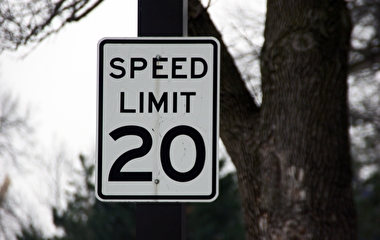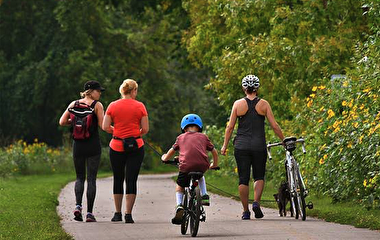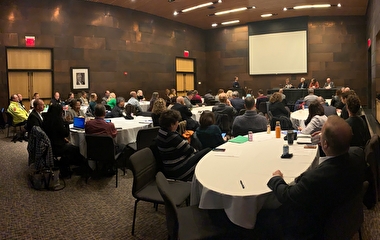Providing an attractive alternative to driving is often a key motive for transitway investment. In the popular imagination, agencies would select a high-demand corridor and build a dedicated transitway, and drivers would then directly substitute transit trips for driving. While transitways’ proven ability to attract “choice” riders (people who can drive and can afford cars, but choose to take transit instead) is compelling, the reality of their mode-shifting impacts can be complicated.
In a new study, a team of researchers from the Humphrey School of Public Affairs explored the effects of travel cost, travel time, and population density on mode choice. The research, sponsored by the Transitway Impacts Research Program, aims to help policymakers and transportation planners better understand and plan for these complicated impacts and maximize public investments in transitways.
Researchers began by using data from the Metropolitan Council’s Travel Behavior Inventory to examine mode choice in the Twin Cities region. In particular, they studied the competition between personal vehicles and transit. They found that in the seven-county Twin Cities metro area, the monetary value of in-vehicle travel time is about $17.50 an hour, with a “penalty” of $10 per transfer (equivalent to 35 minutes of in-vehicle travel time).
“Travel time seems to be the key for promoting the shift to transit,” says associate professor Jason Cao, the principal investigator. “Transit travel times compared with automotive travel times are an important predictor of the decision to drive or use transit.”
In addition, they discovered that density has a critical impact on the choice of transit, and that the density at destinations is more important than the density at origins, especially for people sharing a ride.
Next, researchers examined transitway ridership at the station level through a study of the Twin Cities and 15 peer regions to learn what role transit-supportive public policies play in boosting transitway ridership. Using a multiple regression analysis, they predicted boarding at the station level as a function of transit-supportive policies while controlling for the built environment, transit service, and socioeconomic characteristics.
“We found that specific station-area-focused policies promoting affordable housing, and explicit policies calling for sidewalks on all streets in station areas or entire cities, have a significant and positive impact on ridership if there are sufficient potential destinations in the station area,” says associate professor Yingling Fan. “The effects of transitways are bound up with, and dependent on, the places they serve.”
“This research reinforces that in addition to fully building out our regional transitway network, we also need to be intentional about investments and policies that support transit-oriented development,” says John Doan, Southwest LRT senior project manager at Hennepin County.
Based on their findings, the researchers recommend strengthening pro-affordable-housing policies and pro-sidewalk policies in the Twin Cities’ station areas, supporting and encouraging the neighborhood-scale commercial development required for these policies to succeed, and continuing the implementation of these policies as the regional transit system expands.
“Ultimately, the central thread of our research is that attracting the greatest number of travelers to transitways not only requires building excellent transitways, it also requires focusing on the broader transportation system and on the form of the region itself,” Cao says.
The final report was authored by Cao, Fan, and research fellow Andrew Guthrie.
